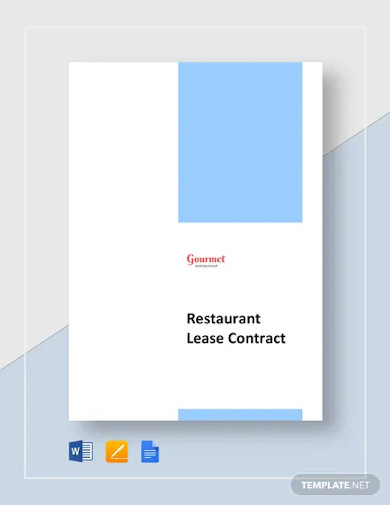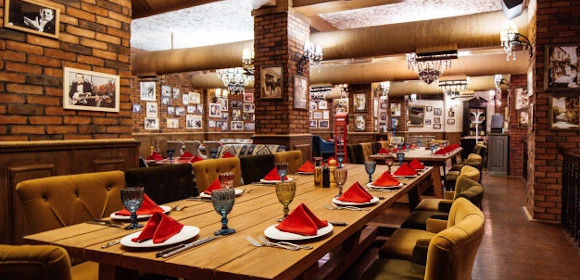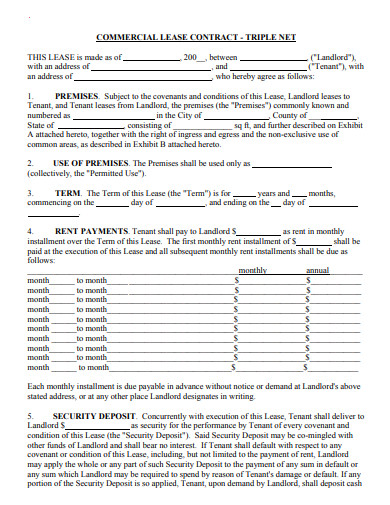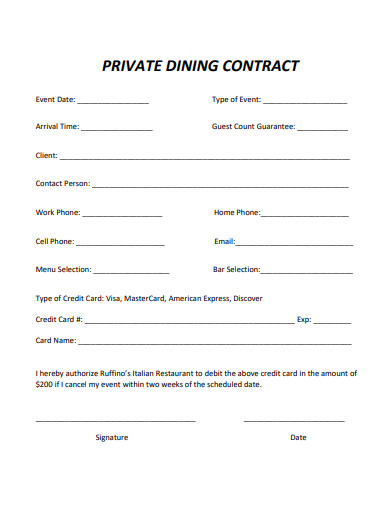Not all restaurant establishments have the luxury to have their own building or space to open up their restaurants. In most cases, restauranteurs would look for the best and feasible location to rent or lease out a property. This is very common if you see restaurants in malls and other entertainment and social districts. Location is one of the top priorities for restauranteurs, it is a marketing strategy that would help attract customers. The more accessible and visible a restaurant, then there is better chance of drawing in more customers. If you run a restaurant or are planning to move or expand your business, then aside from that attractive location, the next step of the process is to settle with the space that is for lease. If you think everything is up to what you have expected it to be, then drawing up a restaurant lease contract is the next step to finalizing the agreement. Read more about this in our article below and go check out our free restaurant lease contract samples for your perusal.
3+ Restaurant Lease Contract Samples
1. Restaurant Lease Contract

2. Commercial Restaurant Lease Contract
3. Sample Restaurant Lease Contract
4. Restaurant Dining Lease Contract
What Is a Restaurant Lease Contract?
One of the main components of a restaurant business plan is the location of the restaurant. For this kind of business establishment, location is a big factor that would affect its revenue. In most cases, you need people to come in and dine. Relying solely on take-outs and delivery is another thing. Aside from that, another big factor that restaurant owners must highly consider is the cost to occupy the space or the lease. Yes, it may be a great location but can your company afford it? Feasibility studies are often done in advance in some cases in determining the foot traffic, and if the ROI is sufficient enough to cover the cost. It is imperative you think about this before committing to the lease. Just because the location looks great doesn’t ensure a steady revenue. Lastly, you need to also think of your competitors, unless you are a popular fast-food chain then opening your doors directly in front of your competitors isn’t much of a problem.
Once you have established everything and are pretty confident with the location you have chosen. Then the next step is to finalize the lease through a restaurant lease contract or restaurant lease agreement. This document is used by restaurant business owners and lessors when renting out commercial space to their lessees. This extends to restaurants in shopping malls, standalone restaurants, coffee shops, and other food venues. It would usually include the responsibilities and terms of both parties, monthly rent, and other fees that are either included or excluded in the contract.
How To Write a Restaurant Lease Contract?
A contract or agreement is necessary to make it clear to all parties that the obligations, responsibilities, and expectations are agreed upon and in writing. Oral contracts are hardly effective as one can dismiss them anytime most especially without evidence whereas contracts made in writing can be used as reference should any issues arise in the future. When writing a restaurant lease contract, or if you are about to inspect one below are the basic elements that are found in this particular document:
1. Statement of Agreement
Basic information about both parties, usually found in the first portion of the contract, should include the names/company names, location, and contact information. And it should be stated that both parties have agreed to the terms written within the contract.
2. Restaurant Details
Included in the contract are a detailed description of the restaurant’s location, the restaurant’s legal business name, and other relevant information. This would include what type of restaurant will be opening, and the expected number of staff and customers.
3. Term
How long will the tenancy be? Depending on the lessor’s policy, it should be clearly indicated in the contract. In most cases, the renewal of the contract’s lease term should be stated as well. This should include an option to renew the lease within a specific amount of time to exercise those rights.
4. Deposit and Base Rent
In most rentals or spaces for lease, a security deposit is part of the transaction to ensure that the space is acquired by the tenant. Also, the base rent is an essential element of a restaurant lease contract. Details about the rent amount, due date, accepted forms of payment, late fees, interest, etc are also included in the contract.
5. Maintenace and Improvements
Conditions about the maintenance and improvements of the space or property must be clearly stated in the contract. This would list which party is responsible for what repairs and if the tenant is permitted to make improvements to the property and outline certain limitations.
6. Additional Information
Other important details that are needed in the contract are as follows:
- Insurance clause – the lease will set the required coverage amounts and other details as it relates to the state and business.
- Cancellation or termination clause – which includes the conditions as well as the fees to be paid.
- Sublease and assignment rights
- Governing law
FAQs
What Is a Lease Proposal?
This is document will be used by the landlord’s attorney to prepare the lease contract.
What Are The Types of Rental Agreements?
These are fixed-term tenancy, tenancy at sufferance, periodic tenancy, and tenancy at will.
What Is the Difference Between a Rental and Lease?
The difference between both is the period of time covered. A rental agreement tends to cover a short term, usually 30 days while a lease contract is applied to long periods, usually 12 months, although 6 and 18-month contracts are also common.
The right location to open your restaurant is a contributing factor to its success. Once you are able to set your sights on that space for lease, then start drawing up a restaurant lease contract and finalize the deal.
Related Posts
Argumentative Writing Samples & Templates
Contract Cancellation Letter Samples & Templates
Sample Material Lists
Sample Excuse Letter for School
Feature Writing Samples
FREE 10+ Security Guard Contract Samples in PDF | MS Word
FREE 10+ Option to Purchase Agreement Samples in MS Word | Apple Pages | PDF
FREE 26+ Curriculum Form Samples in MS Word | PDF
FREE 20+ Cleaning Service Proposal Samples in PDF | MS Word
FREE 29+ Sample Loan Application Form Templates in MS Word | PDF
FREE 10+ Event Venue Contract Samples in PDF | MS Word | Pages | Google Docs
FREE 10+ SBAR Samples in PDF | DOC
FREE 12+ Music Band Contract Templates in PDF | MS Word
FREE 10+ HVAC Maintenance Contract Samples in PDF | MS Word
FREE 10+ Social Media Marketing Contract Samples in MS Word | PDF



